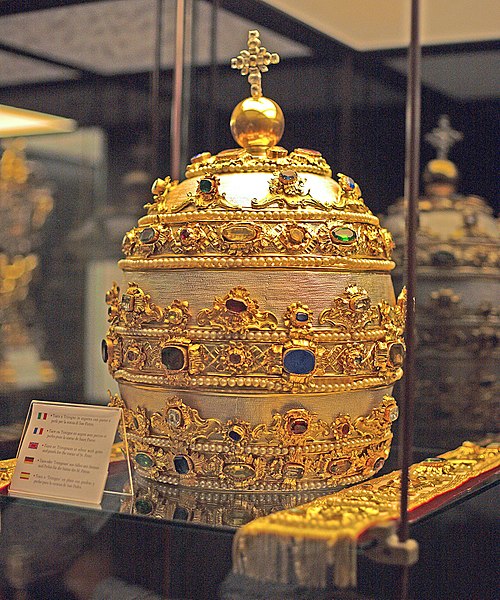Süleyman the Magnificent's Venetian helmet
Süleyman the Magnificent's Venetian helmet, was an elaborate headpiece designed to project the sultan's power in the context of the Ottoman–Habsburg rivalry. It was acquired by the sultan in 1532. The rivalry with the Habsburg monarchy was one of the most significant political and military relationships addressed by the sultan during his reign. In addition to military campaigns, Süleyman also took political and diplomatic steps in order to advance the Ottoman position, promoting trade with European powers and purchasing expensive jewels such as the helmet. The key figures behind the purchase of the helmet were Grand Vizier Ibrahim Pasha and his chief advisors, İskender Çelebi, the chief treasurer, and Alvise Gritti, a powerful jewellery merchant based in the Ottoman capital Konstantinyye, or Istanbul, as it was renamed in 1930.

Illustration of Suleiman the Magnificent wearing his Venetian Helmet, a four-tiered crown designed to stress that the sultan outranked even the pope (who wore a three-tiered crown)
Illustration by Agostino Veneziano showing Suleiman the Magnificent wearing the Sultan's Venetian Helmet, a four-tiered crown, 1535
The papal tiara is a crown that is worn by popes of the Catholic Church from as early as the 8th century to the mid–20th century. It was last used by Pope Paul VI in 1963, and only at the beginning of his reign.
A papal tiara adorned with sapphires, rubies, emeralds and other gems, at the St. Peter's Basilica, Vatican City.
Pope Innocent III (1198–1216) in early papal tiara. Fresco at the Benedictine monastery at Sacro Speco [it], about 1219
Pietra dura mosaic depicting Pope Clement VIII wearing a tiara with three crowns
Tiara presented to Pope Benedict XVI in 2011 by some German Catholics (see above) but not used by him




![Pope Innocent III (1198–1216) in early papal tiara. Fresco at the Benedictine monastery at Sacro Speco [it], about 1219](https://upload.wikimedia.org/wikipedia/commons/thumb/0/05/Innozenz3.jpg/476px-Innozenz3.jpg)

